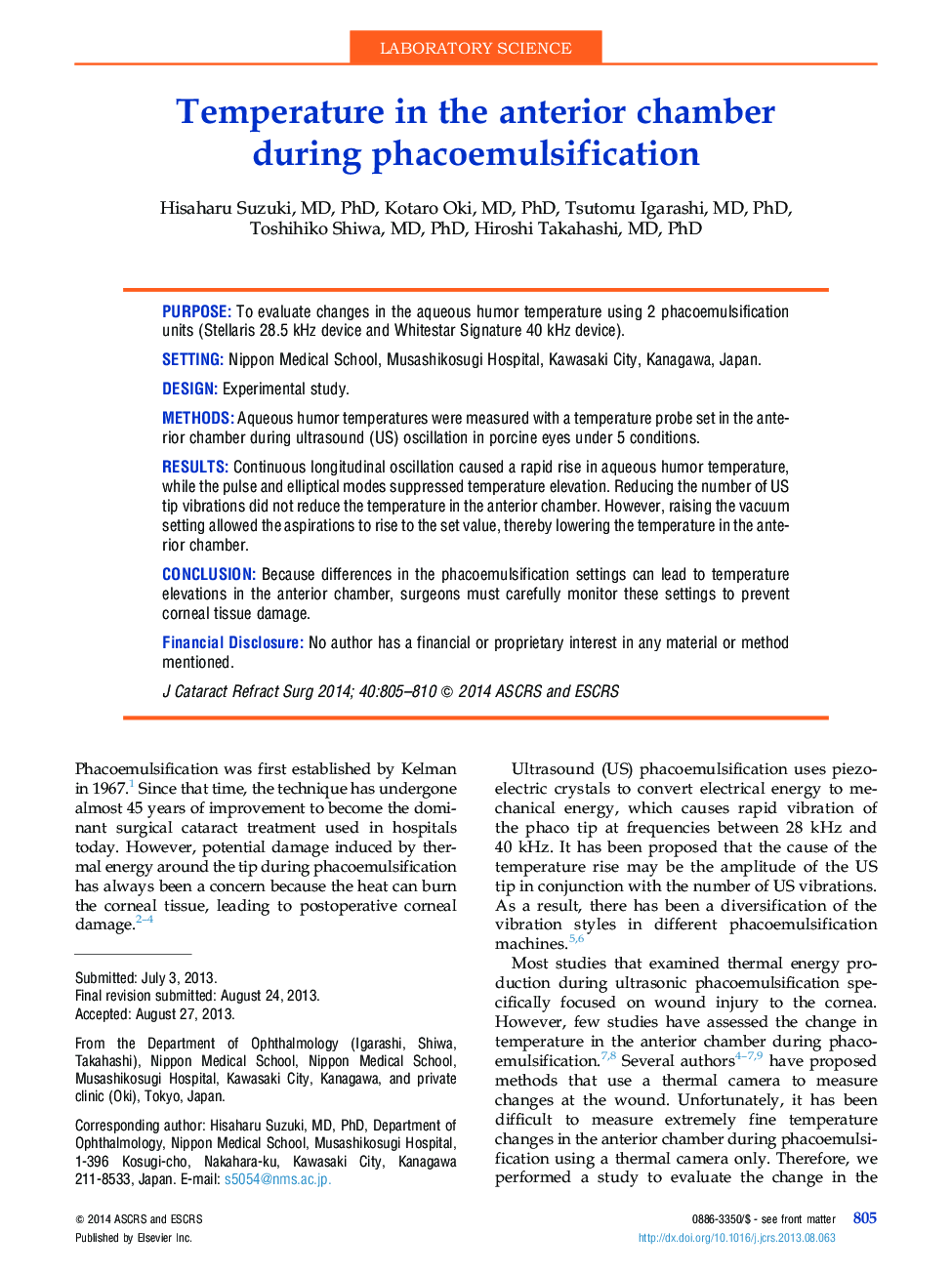| Article ID | Journal | Published Year | Pages | File Type |
|---|---|---|---|---|
| 4017121 | Journal of Cataract & Refractive Surgery | 2014 | 6 Pages |
PurposeTo evaluate changes in the aqueous humor temperature using 2 phacoemulsification units (Stellaris 28.5 kHz device and Whitestar Signature 40 kHz device).SettingNippon Medical School, Musashikosugi Hospital, Kawasaki City, Kanagawa, Japan.DesignExperimental study.MethodsAqueous humor temperatures were measured with a temperature probe set in the anterior chamber during ultrasound (US) oscillation in porcine eyes under 5 conditions.ResultsContinuous longitudinal oscillation caused a rapid rise in aqueous humor temperature, while the pulse and elliptical modes suppressed temperature elevation. Reducing the number of US tip vibrations did not reduce the temperature in the anterior chamber. However, raising the vacuum setting allowed the aspirations to rise to the set value, thereby lowering the temperature in the anterior chamber.ConclusionBecause differences in the phacoemulsification settings can lead to temperature elevations in the anterior chamber, surgeons must carefully monitor these settings to prevent corneal tissue damage.Financial DisclosureNo author has a financial or proprietary interest in any material or method mentioned.
